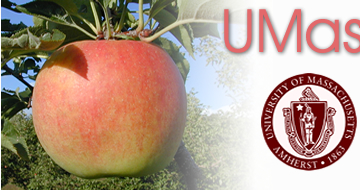

| FRUIT ADVISOR HOME | CONTACT | ABOUT | ||
 |
 |
|
| Consumer Evaluation of New, Antique, and Little Known Apple Varieties | ||
|
|
|||
When the retail stand at the CSOREC opened in the morning, a portion of the harvested fruit were placed prominently in the sales area. A sign was placed above the box of apples that informed the customers that we were asking for their help in evaluating new varieties. The results of the responses were to be used as a guide in helping to decide which apples we plant at the CSOREC and which apples we encourage growers in Massachusetts to plant. Additional fruit were brought from the storage area as the box was emptied. Participants were given an apple to taste with the understanding that they would fill out the Variety Evaluation Form. After variety evlauation was complete, all data were entered into a spreadsheet where they were analyzed and summarized. Brief Description of Apples Included in the Consumer Taste Evaluations |
|||
Akane is a very attractive, medium-sized apple that ripens in early September. It has white flesh, and when ripe, it is one of the most aromatic apples available. It has nearly 100% red color that develops early. Consequently, it is frequently harvested prematurely, before the volatiles and taste components can fully develop. The flavor is mild. It is one of the best pie apples available. When cooked, slices remain intact and unlike many apples, the flavor components of the apple can be detected in the cooked product. Akane displays little preharvest drop, and fruit can be harvested over a 2-week period. It can be stored for 2 to 3 months. |
|||
Arlet (Swiss Gourmet) is a red, slightly tart, medium-sized apple that ripens slightly later than Gala. The quality is good. The skin becomes greasy if harvest is delayed. Use of a preharvest-drop-control compound is appropriate, since Arlet is prone to extensive preharvest drop before fruit become fully red. Fruit have a tendency to develop russet, especially at the calyx end on as much as 25% of the surface. Red color can mask much of the russet if fruit remain on the tree long enough to develop good red color. It stores quite well if it is harvested at the appropriate time. |
|||
| ©Copyright 2008 University of Massachusetts Amherst. Site policies. Produced and maintained by the UMass Fruit Program. |